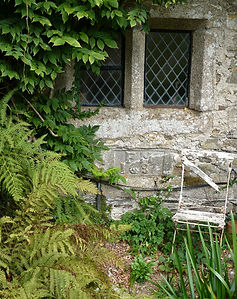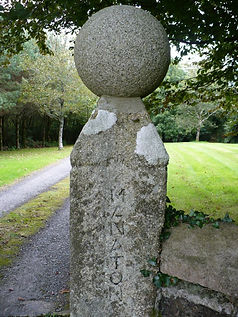Francis Manaton of Manaton
Sampson Manaton (1583-1642), heir at law to Manatons, died in 1642 leaving four daughters and no male heir. His daughter Elizabeth Manaton (1625-c.1717) married her second cousin Arthur Manaton (b. 1626) who then assumed the lordship of the Manaon estates.
At length, Francis Manaton, the second son of Arthur Manaton, was his heir and successor. His elder brother, Sampson Manaton (c.1652-1683/4) matriculated to Exeter College 1669/70 aged 18. He was a student at Grey’s Inn in 1671. But, Sampsons died unmarried. In his will he left a legacy to recast the bells of St. Sampson’s in South Hill and left his residue to his brother Francis. Arthur and Elizabeth also had daughters Mary, who married John Bewes of Launceston; Johan, who married Thomas Easton Vicar of Bishop’s Nymet; Judith who married John Coppplestone (d. 1731), rector of Tedburn, St. Mary, Canon of Exeter; and, Anne, who married Benjamin Steed.
Francis Manaton (c. 1663-1735) matriculated to Trinity College in 1680/1 at the age of 16. He received his B.A. from St Mary Hall 1684 the same year that he likely inherited the manor and barton of Manaton on the death of his brother. Shortly thereafter, Francis set about a program of reconstruction for the buildings at Lower Manaton including the front gate. He left his initials on the barn in 1687. In 1689, Francis Manaton married Mary Huckmore (d. 1730), the daughter of Sir Gregory Huckmore and his wife Honor Hele.
In 1702, Francis Manaton was appointed “Receiver-General of the Land Tax, Window Tax, and House Dutyes for the County of Cornwall.” He held this post from 1702 to 1721. In 1716, Francis Manaton was named as heir to the estate of his cousin Henry Manaton (1650-1716) of Harewood, Calstock and Kilworthy. And, in 1719, Francis Manaton stood for election at Callington, but lost to Thomas Copleston, a Whig, and a trustee of the Rolle Estate after the death of Samuel Rolle that same year.
Perhaps owing to the inheritance from his cousin Henry, Francis was also a Tory recorder for the borough of Camelford. Four parts in five of the tenements in Camelford belonged to Francis Manaton. The tenements were let out in leases upon lives, and the inhabitants had the right of vote in elections. This gave the Manatons the power as landlords to turn people out of their houses by not renewing, or troubling them if in arrears, which could be used to influence how votes were cast. But, this power may not have been exercised. Governor Thomas Pitt had been able to establish an interest for one seat through his steward, John Phillips, attorney in, deputy-recorder and several times mayor of Camelford. On the death of Francis Manaton in 1735, Thomas Pitt, grandson of Governor Pitt, became recorder.
In his will, Francis requested burial on the family vault at Manaton Aisle in St. Sampson’s Church and requested a sermon at his funeral, but only if it was to be given Hele Trelawney (d. 1740), then rector of South Hill. Hele was the son of Sir Johnathan Trelawney. The wife of Sir Jonathan Trelawney, 3rd Baronet, and Bishop of Exeter was second cousin to Manaton’s wife Mary Huckmore, daughter of Honor Hele. Their common ancestor was Thomas Hele (d. 1615) of Exeter, Sheriff of Devon, 1600.
Francis had two sons. Ambrose (1690-1723), who matriculated to Balliol College in 1708/9 aged 18. He was later admitted to Gray’s Inn and may have practiced law in Launceston. Ambrose died unmarried. The second son, Sampson Manaton (1692/3-1737), died unmarried shortly after his father.
Francis Manaton also had a daughter Mary (b. 1694) whose first marriage to Richard Doidge of Callington was a clandestine ceremony performed at the “Kings Arms” in London in 1716. Her husband died before 1731/2 and she remarried in 1732 to her fourth cousin, Rev. Robert Manaton (1694-1746) who by that point in time would have been the obvious successor to the Manaton estates centered on Kilworthy.


